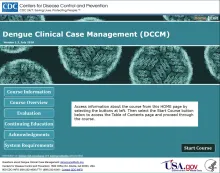Resources for patient support
Checklist for dengue home care (based on WHO guidelines) and list of external resources for patient education

According to the World Health Organization’s 2012 Handbook for Clinical Management of Dengue, although dengue is complicated in how it can manifest, the management of dengue can be relatively straightforward if the required interventions are timely. Some of these interventions consist of appropriate at-home care by patients and/or caregivers as guided by their health care provider. Patients can be grouped into three management groups based on severity of the disease: Group A, Group B, and Group C. Group A can be sent home, Group B are to be referred for in-hospital management, while Group C require emergency treatment.
To be classified as belonging to Group A, a patient should not have warning signs and be able to tolerate adequate volumes of oral fluids as well as be able to pass urine at least once every 6 hours. For these patients (in Group A), it is recommended that health care professionals instruct patients to immediately return to the hospital if any warning signs develop. Additionally, health care providers should provide written instructions to patients on how to manage dengue at home.
The following checklist summarizes the home care instructions provided by the World Health Organization’s Handbook for Clinical Management of Dengue. The checklist is to intended to support health care providers in giving at-home care instructions to patients and can be used to supplement the provider’s own instructions and/or local treatment guidelines.
Checklist for Dengue Home Care
Additional patient resources are also provided below.
Agency Specific Resources for Dengue Patients
The resources below are meant to be utilized by health care providers with their discretion and clinical judgement to share with patients as they see fit. Please note, Takeda has no influence or control over the content of third-party websites. It is the responsibility of the health care provider to ensure materials are up-to-date and in accordance with local treatment guidelines before sharing.

Pan American Health Organization (PAHO)
Provided by PAHO (a regional office of the World Health Organization) in the Americas, this resource provides information regarding symptoms and prevention of dengue as well as key facts and a fact sheet regarding dengue. Statistics regarding incidence of dengue are also provided.

A Dengue-Free Me
Provided by the WHO Regional Office for the Western Pacific (World Health Organization, 2004), this resource provides a campaign geared towards schoolteachers on how to promote health and prevention of dengue within schools and communities.

Homecare for Dengue Patients
Provided by the Centers for Disease Control and Prevention (CDC), this resource consists of a fact sheet detailing how caregivers can care for sick family members who have dengue. The fact sheet details what should do be done for those who have a fever as well as what to do as the fever goes away.
Dengue During Pregnancy
This webpage, provided by the CDC, is geared towards pregnant patients who may be traveling to a region with high levels of dengue. Printable patient fact sheets are provided in both Spanish and English.
Takeda Sponsored Resource for Dengue Patients
The resource below is meant to be utilized by health care providers with their discretion and clinical judgement to share with patients as they see fit. Please note, it is the responsibility of the health care provider to ensure materials are up-to-date and in accordance with local treatment guidelines before sharing.

Know Dengue
Know Dengue is a new resource offered by Takeda Pharmaceuticals to promote dengue disease awareness among patients, caregivers, and their communities. The resource offers two main features “Know the symptoms” and “Know the numbers”; users can utilize the “Know the symptoms” feature to determine how well they know the symptoms of dengue and learn more about identifying symptoms. The “Know the numbers” feature can be used to access case numbers of dengue from recent years in different geographical areas and see how these numbers are changing.
VV-MEDMAT-64452


 Malaysia
Malaysia
